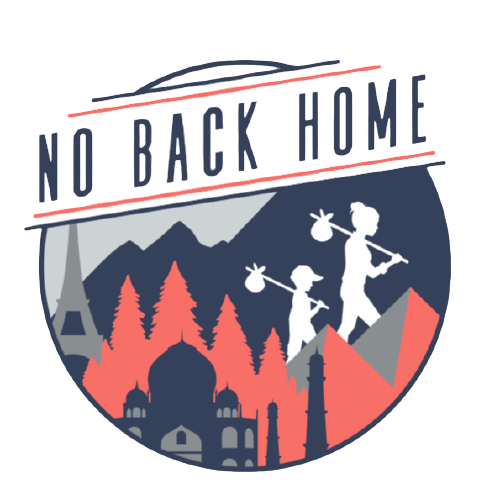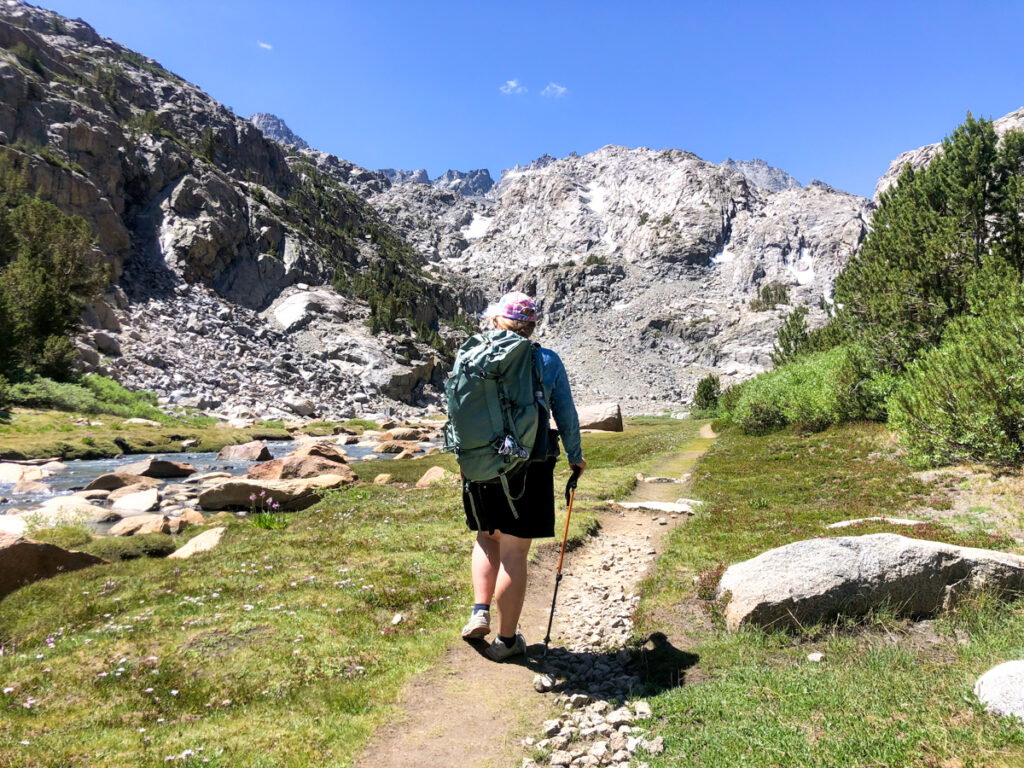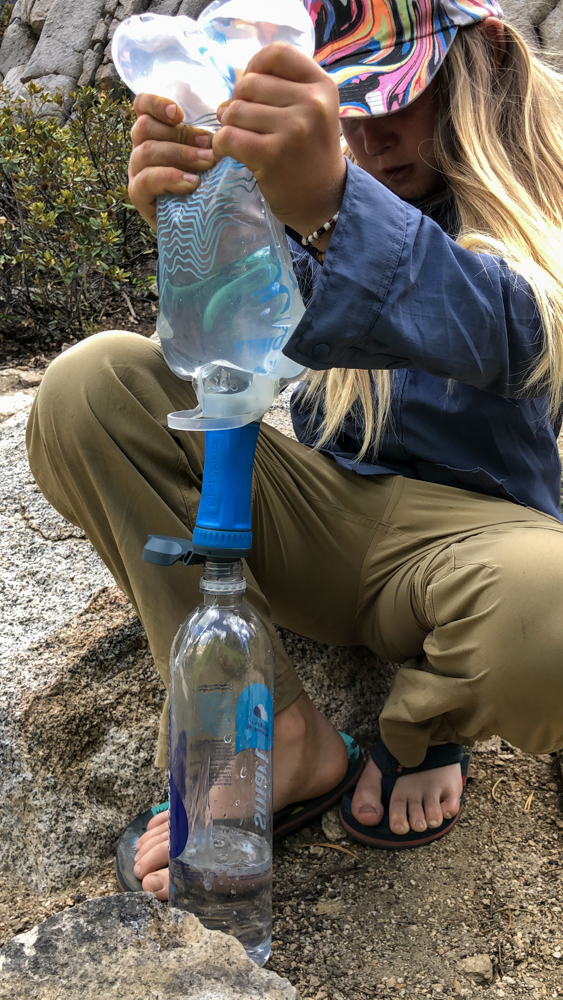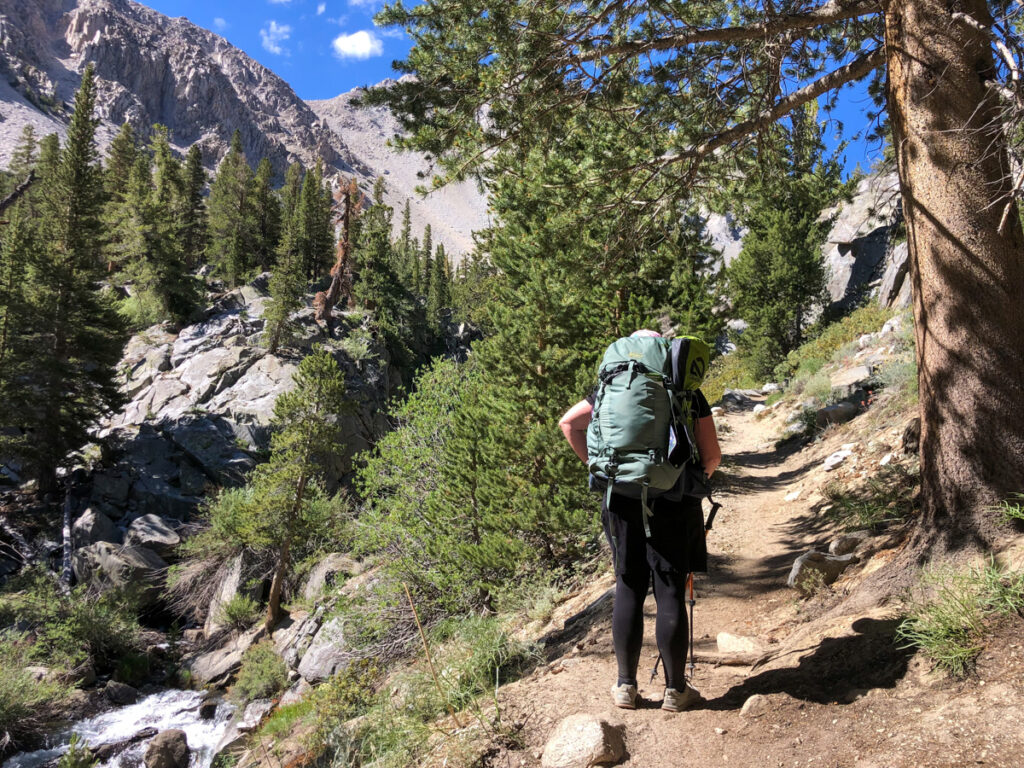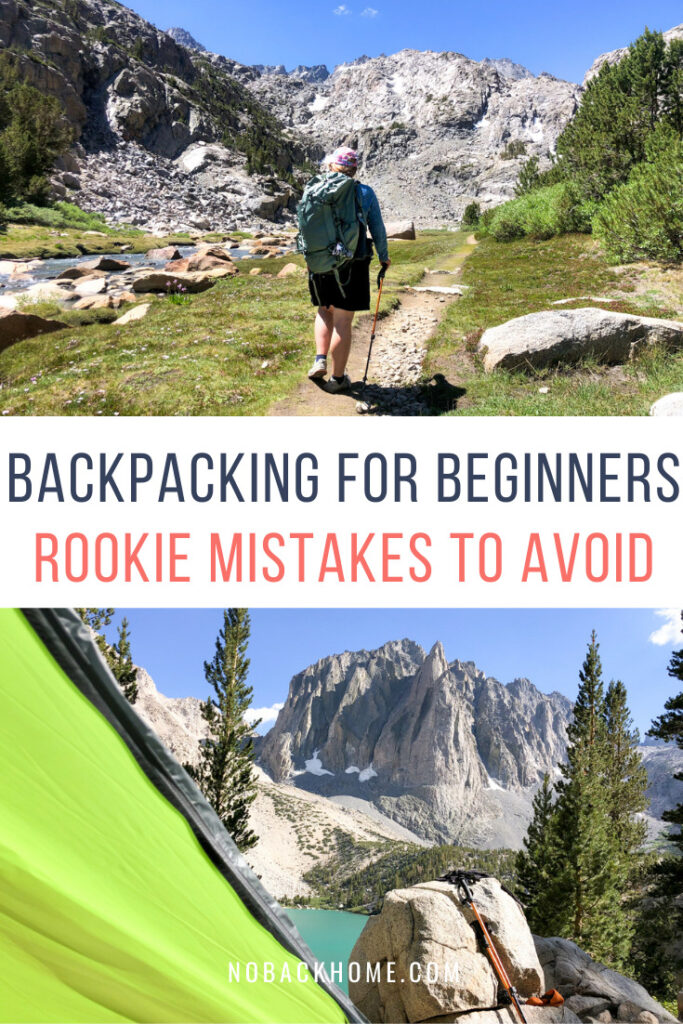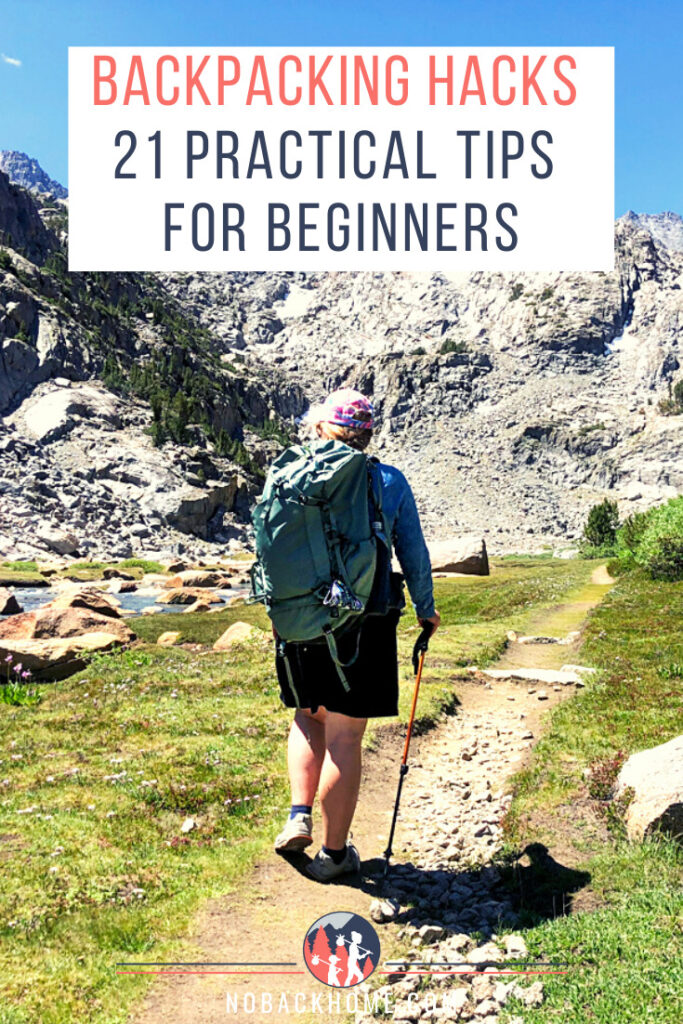Getting ready to go backpacking? Our backpacking hacks and tips for beginners will get you on your way feeling more confident with less weight in your bag.
One of the best ways to get off the beaten path and head outdoors is to go backpacking. For beginners however, it can feel quite daunting to start a new hobby such as this. There is a ton of gear to check out, it’s not always easy to figure out what the best backpacking routes are or how to get permits and of course you need to figure out how to get the most out of your trip with the least amount of weight.
I am not an avid mountain explorer or athlete, so when we began backpacking, I researched a ton to figure out the best ways to do things for not only myself but for my 10 year old son. Below I share some of the backpacking hacks and tips that I learned along the way by researching and asking every backpacking I could find and then by making the mistakes myself! If you are already to hit to road, don’t forget to check out our detailed Backpacking packing list with everything we take with us, as well as a FREE downloadable packing checklist for yourself.
Disclosure: Some of the links in this post are affiliate links, meaning at no additional cost to you, I will earn a commission if you click through and make a purchase.
Jump to a Heading Below
5 Practical Backpacking Tips for Beginners
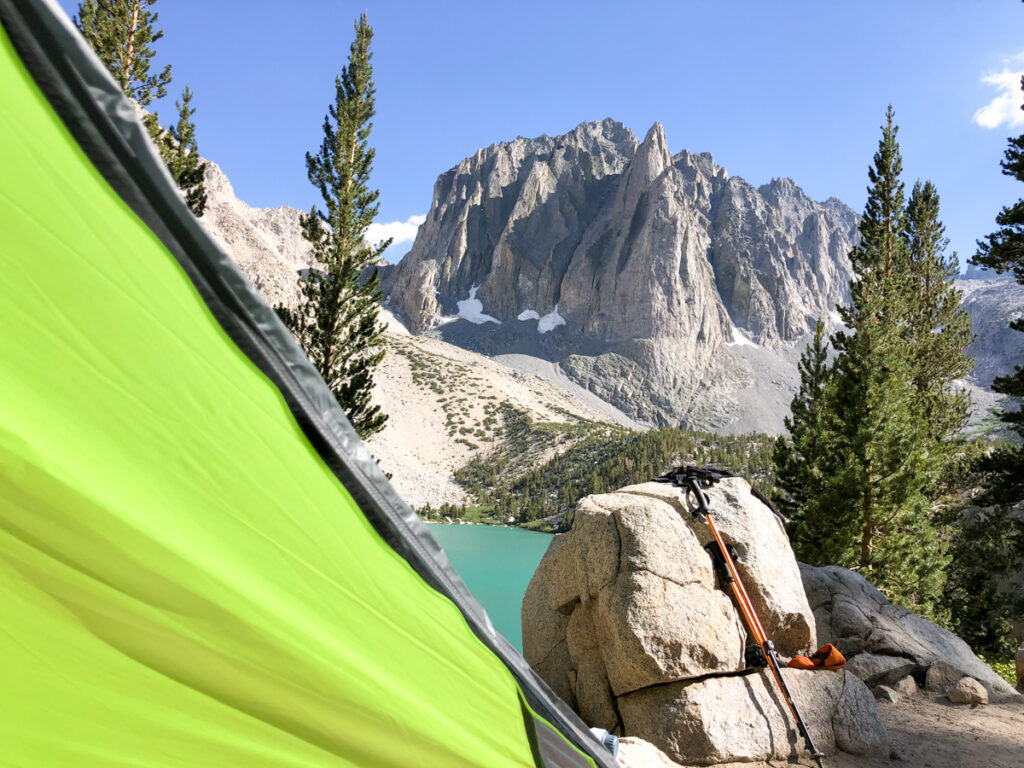 For those of you just starting out on your backpacking journey, I wanted to share a few of the best backpacking tips we learned along the way. Whether you are hiking the Appalachian trail, the Pacific Crest Trail or just a local mountain near your home, these are some of our top tips which might also help the experienced hikers as much as for the first time campers.
For those of you just starting out on your backpacking journey, I wanted to share a few of the best backpacking tips we learned along the way. Whether you are hiking the Appalachian trail, the Pacific Crest Trail or just a local mountain near your home, these are some of our top tips which might also help the experienced hikers as much as for the first time campers.
Waterproof Your Backpack
No matter what you think the weather will be like, even here in Southern California where we are constantly in a drought there is always a need for a backpack rain cover. Shockingly, even when it’s super hot and dry in the valley you just never know what will happen while out in the mountains. Especially during the heat of summer, thunderstorms can pop up at any time. Better to prepare for weather extremes and hope for dry calm weather by making sure you have your pack cover handy.
Create an Effective (and Light) Layering System
Have a base, mid and outer layer that you can comfortably wear all at once; but make sure they’re easy to take on and off in response to weather changes. My go to on the trail is always merino wool. The light base layer can be worn alone in the summer to help combat sun exposure and then additional layers added on to keep you warm as the sun goes down. Wool is warm and odor resistant, is an efficient insulator, and fights off bacteria that make you stinky. I’m a fan of wool year round.
Next for me, is a mid weight down jacket. In Southern California this is the most I typically need unless I plan to be camping in the snow (which I don’t!).
Hydrate BEFORE Your Trip
One of the biggest factors people forget when preparing for a backpacking trip is that for your body to function at an optimal level, you should be hydrated BEFORE you start your journey. This is especially true for people hiking in altitude or prone to altitude sickness. Make sure to start thinking about this a few days before your trip – load up on the water and electrolytes while cutting down on caffeine and sodas that can pull hydration from your body.
Pro Tip: The better hydrated you are before your trip, the easier it will be to stay hydrated on your backpacking journey. We have found this especially helpful in high elevations where altitude sickness can pop up at any time.
Bring a Change of Shoes
Even if you are planning to be an ultra lightweight backpacker, I promise you, your feet will be happy to have some fresh air and get a break from your hiking shoes. I bring my lightweight water shoes with me on hikes because they can double as hiking shoes on mellow flat terrain and give my feet the opportunity to breathe. My son takes a light pair of flip flops. These are also very useful in the middle of the night for potty breaks!
Test Your Food Before You Go
Everyone says to test out your food options before you go, but I get it, those pre-packaged dehydrated meals are expensive and who wants to waste them before you even need to eat them. People think that you will eat anything when you are exhausted and hungry. Wrong again. It is a common thing to lose your appetite while on big hikes, so it’s especially important to really like the food you bring. If you like it at home, you will like it on the trail.
Useful Backpacking Hacks for Everyone
I love that so many of these backpacking hacks are great for novice backpackers and experienced alike. It makes you think creatively about what you need and how you use things. The more you are out on the trails, the more you will learn as well.
Best Hacks for Staying Lightweight
Even for those who are not considered ultra lightweight backpackers, there is always a quest to cut down on the pounds and reduce extra weight where possible. Here are a couple of our top tips for keeping the lbs down. To track how much all of your gear weighs, you can enter each item here and see where you can cut down.
Buy Lightweight Gear
This is a no brainer, but buy the lightest gear you can afford other than your backpack. This is one that maybe you don’t want to skimp on with lightness because they tend to be less durable. Tents, a sleeping pad and sleeping bags are the places you can save the most on weight, but these are expensive the lighter you go. Buy as you go, or even consider renting.
The lighter you can go, the lighter shoes you can wear. One of the biggest trends of late is for thru-hikers to wear light weight trail running shoes. I agree with this trend and love my trail shoes.
 Use Smart Water Bottles
Use Smart Water Bottles
You might think using a Nalgene bottle is the way to go, but trust me, the best bottle for backpacking is the 1 liter Smart Water bottle. They are tall, skinny and light weight but stay stable for use over and over again unlike other plastic water bottles. Many water filters are designed with the Smart Water bottles in mind! (We love this one). Although many people do like to use their Nalgene bottles with a headlamp to create ambient light in their tent.. That will be for you to decide if you want that extra weight or not!
Wrap Duct Tape Around Something
You never know when you might need a little bit of duct tape, but who wants to bring a big roll! Instead, wrap some around your trekking pole, a pill bottle or even your lighter for use in an emergency!
Vacuum Pack Your Food
An easy way to reduce your weight/volume of your pack is to vacuum seal your foods in flat packs so that you can pack more in the smaller bear boxes (if you need to use one) even for multi-day trips. The weight is the same, but the food will be flat and easier to pack.
Best Backpacking Food Hacks
There are so many useful tips on how to pack your foods, what to eat and how to minimize your weight, but I will share our top tips here.
Collect Condiment Packets and Salt & Pepper Packets
Before you begin your trip, start collecting the small condiment and salt & pepper packets that you get from fast food shops. These are great to carry along with you to jazz up boring food quickly!
Shop at Cost Plus World Market
Cost Plus World Market is a great place to find miniature bottles of hot sauce, cheese, salami and other shelf foods that are perfect for backpacking.
Think Outside of Expensive Dehydrated Food Options
Dehydrated food options at REI and other outdoor shops are easy, but they are expensive. Consider alternative options that you can purchase at your regular grocery store. Some ideas include: tuna packs, instant potatoes, couscous, peanut butter powder, instant oatmeal, hot chocolate, etc.
Also, Trader Joes has a decent instant coffee with cream and sugar added. These are small and lightweight for those who just need a quick coffee boost. These only require boiled water and can be made in seconds!
Repackage Your Foods
One of the biggest hacks that many people don’t think of is to repackage all of your foods. I know I mentioned the vacuum sealer above, but even if you don’t have one of those, it is really easy and important to pack all of your food in plastic bags that you can easily take out all of the air. Your food bag will have much more space once you get rid of rigid packaging.
Unique Backpacking Packing Hacks
Keep Your Electronics in Your Sleeping Bag During Cold Temperatures
One of the worst things for battery life is cold temperatures. When camping in cold weather, make sure to put your electronics in the bottom of your sleeping bag to keep them nice and warm.
Extra Clothes
For the most part you do not need too many clothes while backpacking other than what you are wearing and a change of clothes in case yours get wet. Roll your clothes or use packing cubes. Better yet, use a lightweight dry bag as your clothes bag, which can then also keep your extra clothes dry or be used for wet stinky items.
Medical First Aid Kit
This is one area that you don’t want to skimp on. Make sure to have the basics of each thing you need. Also include athletic tape like Rock Tape which can be used in a variety of ways. We always include a few tabs of antacid for upset stomachs and Benadryl tabs for allergic reactions. Also, moleskin and sheep’s wool to help protect any blisters or hot spots that might form.
Stay Comfortable with Great Hygiene Hacks
 Personal Hygiene
Personal Hygiene
Again the lighter the better, but you don’t want to skimp on personal hygiene.
- Bring a lightweight bamboo toothbrush
- Use Bite toothpaste. Just a few little tablets and you will be good to go.
- If you need a little floss, just wrap it around your toothbrush in case you need a bit.
- Forgo the deodorant, but consider switching to Nuud deodorant (well) before your trip. This way you won’t smell, but also wont have the added weight. If you do have to take it with you, it’s small and light.
- Get used to a “wet wipe” bath – but remember you have to pack these back out with you as well!
Wear Wool
The biggest hygiene hack is to wear wool clothes and socks. Wool is antibacterial which reduces smells. After 4 days of hiking, sweating and wearing the same clothes, I still did not smell only because all my clothes were wool! Merino wool can be surprisingly light weight and worn year round. It traps your body heat on cold nights when you need warmth and cools you down when you are hot. Bring only 1 change of spare clothes for short trips.
Other Assorted Backpacking Hacks
A few other random backpacking hacks that you may or may not need depending on where you live and backpack.
Create Your Own Fire Starters
My 10 year old son actually taught me this DIY fire starter trick! Soak cotton pads and/or cotton balls in melted wax to use as a fire starter. Once you have soaked it in wax, wrap it in plastic until it is fully absorbed. Now it is ready for when you need to start a fire.
Bear Canister Backpacking Hacks
If you are backpacking in California you will almost always need to take a bear container with you on a backcountry camping trip.
It is not unheard of for bears to walk off with a bear box. In highly active bear areas, considering adding reflective tape to your box so that it is easier to find at night. Some backpackers have even added a Tile in the box as a great way to keep track of it if a bear rolls it down a hill!
Lastly, if you rent or buy this type of box, consider taping a coin to the bottom of the container so you can always open it or better yet, make a necklace with a washer on it so you always have a “key” handy!
Remember To Adhere to Leave No Trace Principles
- Pack out everything you take in, including left over foods, toilet paper and other trash in plastic bags.
- Do not wash your dishes or yourself within 200 feet of clean water sources
- Do not go to the bathroom near a water source & dig a hole 6-8 inches for your solid waste
- Minimize campfire impacts by using camp stoves.
- Do not “create” a campsite by moving rocks and habitats. Instead find space that is already suitable.
- Be courteous to your fellow hikers
Happy Backpacking!
Before you go, don’t forget to download your FREE Backpacking Packing Checklist!
If You Enjoyed This Post, Sign Up To Receive Posts By Email or…
